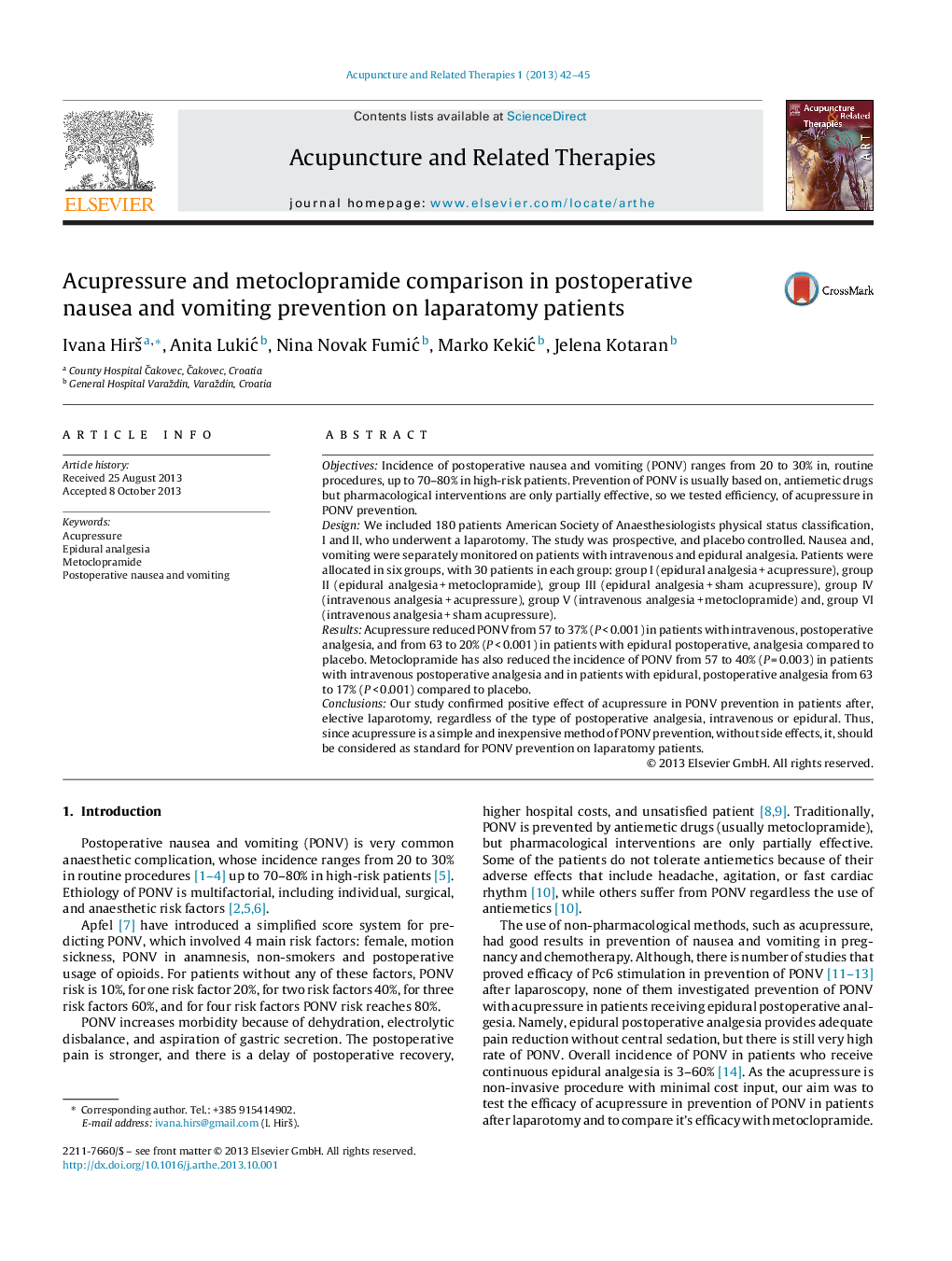| Article ID | Journal | Published Year | Pages | File Type |
|---|---|---|---|---|
| 2615403 | Acupuncture and Related Therapies | 2013 | 4 Pages |
ObjectivesIncidence of postoperative nausea and vomiting (PONV) ranges from 20 to 30% in, routine procedures, up to 70–80% in high-risk patients. Prevention of PONV is usually based on, antiemetic drugs but pharmacological interventions are only partially effective, so we tested efficiency, of acupressure in PONV prevention.DesignWe included 180 patients American Society of Anaesthesiologists physical status classification, I and II, who underwent a laparotomy. The study was prospective, and placebo controlled. Nausea and, vomiting were separately monitored on patients with intravenous and epidural analgesia. Patients were allocated in six groups, with 30 patients in each group: group I (epidural analgesia + acupressure), group II (epidural analgesia + metoclopramide), group III (epidural analgesia + sham acupressure), group IV (intravenous analgesia + acupressure), group V (intravenous analgesia + metoclopramide) and, group VI (intravenous analgesia + sham acupressure).ResultsAcupressure reduced PONV from 57 to 37% (P < 0.001) in patients with intravenous, postoperative analgesia, and from 63 to 20% (P < 0.001) in patients with epidural postoperative, analgesia compared to placebo. Metoclopramide has also reduced the incidence of PONV from 57 to 40% (P = 0.003) in patients with intravenous postoperative analgesia and in patients with epidural, postoperative analgesia from 63 to 17% (P < 0.001) compared to placebo.ConclusionsOur study confirmed positive effect of acupressure in PONV prevention in patients after, elective laparotomy, regardless of the type of postoperative analgesia, intravenous or epidural. Thus, since acupressure is a simple and inexpensive method of PONV prevention, without side effects, it, should be considered as standard for PONV prevention on laparatomy patients.
